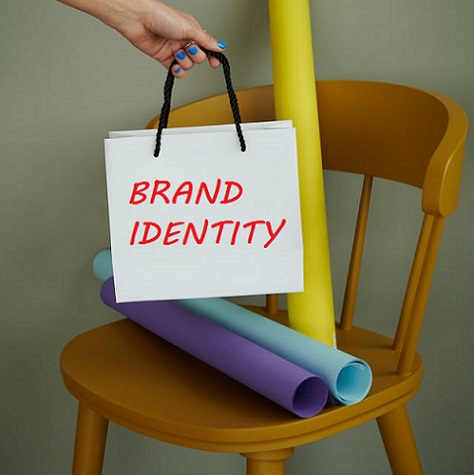Today, users get information about brands, products and companies from a variety of sources depending on their age, circumstance and the devices they use. Along with digital and social media platforms like YouTube, Facebook and Instagram, users also get to see brand messaging on billboards during their commute.
Other traditional marketing forms such as print media (newspapers, magazines or flyers) and radio ads remain relevant for brand messaging, even as digital channels continue to evolve into powerful marketing mediums.
In this multi-channel marketing landscape, consistency in brand messaging is more crucial than ever. Research has shown that most shoppers use more than one channel when shopping and customers that use multiple channels when shopping also have a 30% higher lifecycle value for businesses1.
A unified brand message strengthens recognition, builds trust and ensures that your brand stands out in a crowded marketplace. Therefore, whether a customer encounters your brand on a billboard or through an Instagram post, they should experience a cohesive narrative that reinforces your brand’s identity.
Understanding and defining your brand’s core identity

The foundation of a unified brand message lies in a clear understanding of your brand’s core identity. A brand’s core consists of its values, mission and unique selling points (USPs). These elements should guide all your messaging, regardless of the platform.
When your core identity is well-defined, it becomes easier to maintain consistency across different channels, ensuring that your audience receives a consistent experience whether they see your ad on a billboard or while scrolling through reels and videos on social media.
Learn more on the role of videography in today’s marketing scenario.
Audience insights and platform-specific messaging
Different audiences engage with content in different ways depending on the platform they use. Knowing your audience is key to correctly and effectively tailoring your brand’s message to different platforms. For instance, your tone on LinkedIn might be more professional and straightforward, while on Instagram, a more casual and visual approach might be more effective.
Secondly, what you communicate about your brand will also change depending on the platform. Continuing with the above example, LinkedIn would be a great place to talk about your hiring requirements, while Instagram would be more appropriate to promote a product launch. And, depending on where they are placed, billboards for outdoor advertising can be used to further augment your online campaigns.
Despite these variations, the core message—what your brand stands for—should remain consistent. So, no matter where your audience encounters your brand, they recognize and resonate with it.
Learn how to leverage the power of brand storytelling.
Integrating traditional and digital marketing channels
Traditional marketing channels like billboards, print ads and TV commercials continue to play a vital role in brand positioning and brand development. These platforms often reach broad audiences and can create a lasting impression. Integrating digital marketing with traditional methods is an effective strategy to maximize the impact of your marketing and branding efforts.
For example, a QR code on a print ad can direct users to your website or social media pages, creating a seamless connection between offline and online channels. This synergy is essential to enhance brand visibility and to ensure that your messaging is cohesive across all touchpoints.
Tips for maintaining a unified brand message

1. Develop a brand style guide
A brand style guide is an essential tool for maintaining consistency. It should include guidelines on messaging, tone, visual elements and specific instructions for different platforms. This will keep everyone involved in your marketing efforts on the same page.
2. Centralized content management
Managing content from a centralized repository helps maintain consistency across all platforms. This way, all teams have access to the same resources, reducing the risk of off-brand messaging.
3. Regular monitoring and optimization
Monitoring your brand’s messaging across channels is a must to spot inconsistencies and make necessary adjustments quickly. Use analytics continually to track performance and optimize your messaging based on what resonates most with your audience.
A real-world example – Apple Inc.
Successful brands have mastered the methods of maintaining a unified message across various channels, contributing to their strong market presence. Take Apple, for instance. Whether it’s their product design, advertising or in-store experience, every aspect of Apple’s branding reinforces their commitment to simplicity, creativity and innovation. This consistent messaging has helped them build a loyal customer base and a strong brand identity.
Read to learn more about rebranding and when and how to do it right.
Start by understanding your brand’s core identity. This will help your media and marketing team tailor brand messages to specific platforms, both traditional and digital, creating a consistent brand experience that resonates with your audience and gives your brand a familiar and trustworthy persona.
To achieve this, it’s crucial to partner with a professional brand design company that follows a 360-degree approach to media and marketing and has experience integrating both digital and traditional marketing services for businesses.
Contact us at Webfx if you are looking to overhaul and update your branding and marketing. We are a full-service firm that specializes in multi-channel marketing and understand the craft of unified brand messaging that can help businesses ensure their messaging is in line with the brand’s core identity.
Source:
- March 2015, “Omni-channel shoppers: An emerging retail reality”, Thinkwithgoogle, [available online], available form: https://www.thinkwithgoogle.com/intl/en-emea/consumer-insights/consumer-journey/omni-channel-shoppers-an-emerging-retail-reality/ , [accessed Sep 2024]
